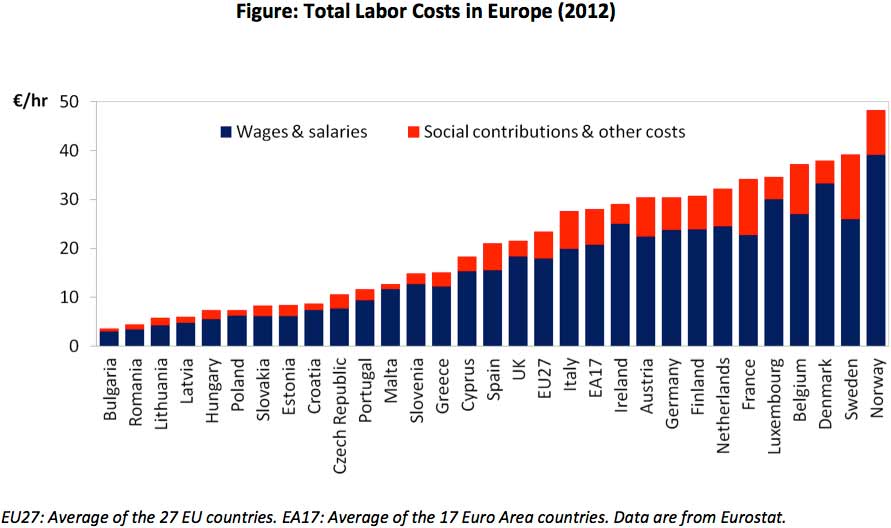Every now and then reports on falling hourly labor costs in euro periphery countries surface and make newspaper headlines. Headlines sometimes express falling labor costs as good news, and other times as bad news, depending on who does the interpreting.
Falling labor costs may be considered good news because they indicate that it is cheaper to hire an additional hour of work. This is helpful in reducing unemployment, a pervasive problem in the European periphery. On the other hand, falling labor costs may indicate a drop in wages and therefore a reduction of purchasing power of those employed.
Some people think that Portugal, Ireland, Italy, Greece, Cyprus, and Spain are on an accelerated path to becoming cheap labor economies, and that it will soon be cheaper to hire an hour of work in these countries rather than, for example, in Eastern Europe. But that won’t happen so fast.
In the figure below, I have plotted total hourly labor costs, measured as wages plus social contributions in European countries. There is an incredibly wide range of labor costs in Europe. In Bulgaria the cost of an hour of labor is just 3.60 euro whereas in Norway it is 48.30. The European average is 23.50. Several years into the crisis, with the possible exception of Portugal, European periphery countries are clustered around this average, nowhere near wage rates in Eastern Europe.

The figure also shows that the fraction of social contributions in total labor costs varies by country. This hints at a way in which countries can lower labor costs without lowering wages: reducing social contributions. In particular, Spain and in Italy stand to gain the most from this because social contributions make up a relatively large part of labor costs.

